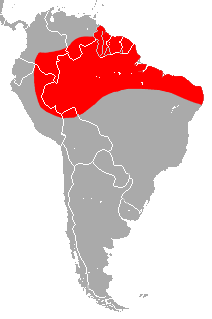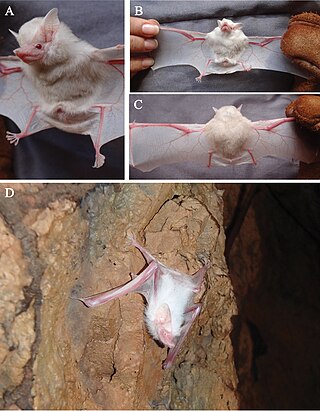
Emballonuridae is a family of microbats, many of which are referred to as sac-winged or sheath-tailed bats. They are widely distributed in tropical and subtropical regions around the world. The earliest fossil records are from the Eocene.

The short-eared bat is a bat species found in Brazil, Costa Rica, Guyana and Nicaragua. It is the only species within its genus.

The greater dog-like bat is a bat species found from southern Mexico through Brazil and Peru.

The white-winged dog-like bat is a bat species found in northern Brazil, southeastern Colombia, Ecuador, French Guiana, Guyana, eastern Peru, Suriname, and Venezuela.

Peropteryx is a genus of 5 species of bat in the family Emballonuridae,

Thomas's fruit-eating bat, sometimes also popularly called Watson's fruit-eating bat, is a species of bat in the family Phyllostomidae. It is found from southern Mexico, through Central America to Colombia. Its South American range is to the west of the Andes. The species name is in honor of H. J. Watson, a plantation owner in western Panama who used to send specimens to the British Natural History Museum, where Oldfield Thomas would often describe them.

The Trinidad dog-like bat is a species of bat from the family Emballonuridae. It is native to Aruba, French Guiana, Grenada, Trinidad and Tobago, and Venezuela. The bat is considered to be rare everywhere in its geographic range, although this may be untrue, as the Trinidad dog-like bat was previously confused with the lesser dog-like bat. It is an aerial insectivore that roosts in hollow trees, hollow rotten logs on the ground, under overhanging banks, and caves in the Llanos of Venezuela.









